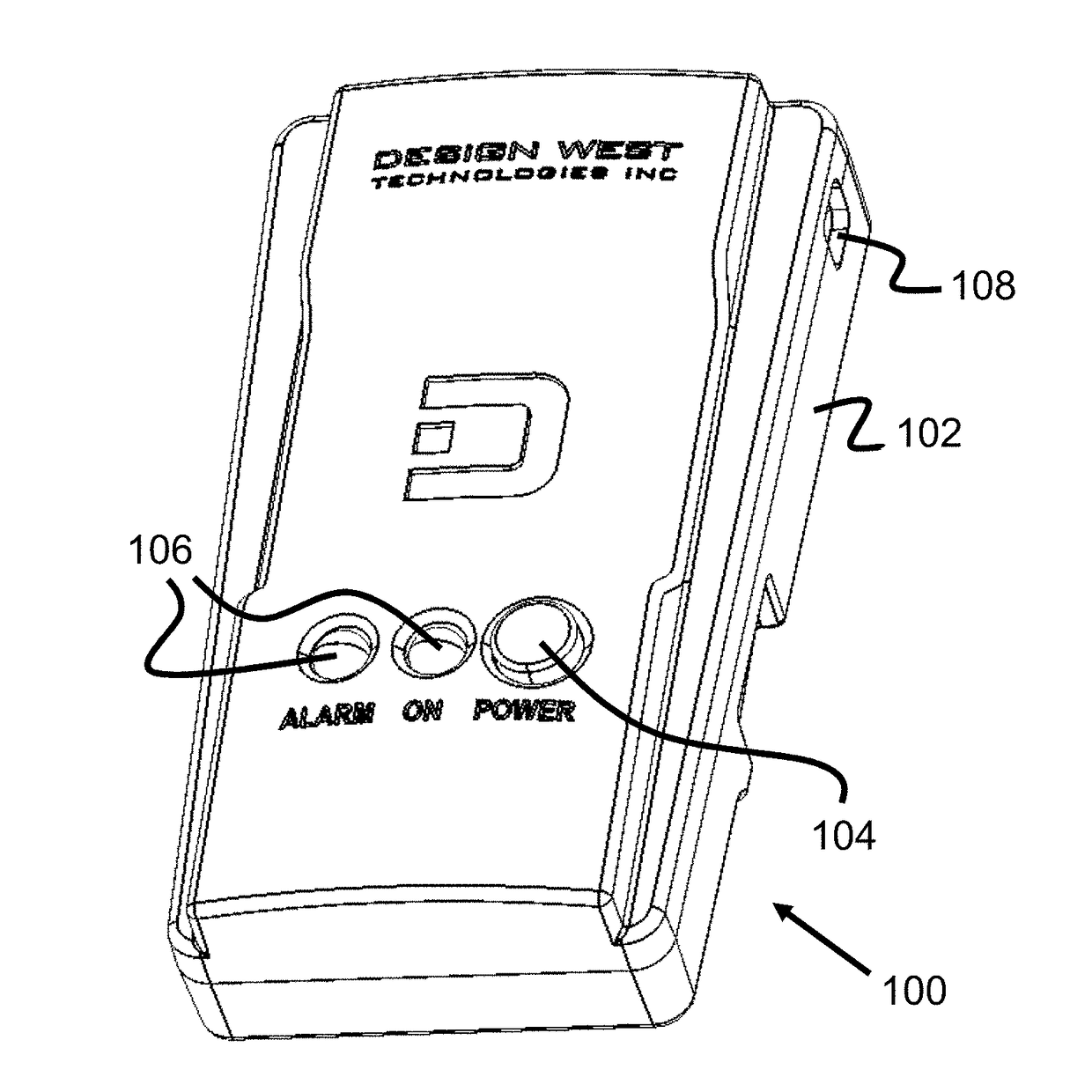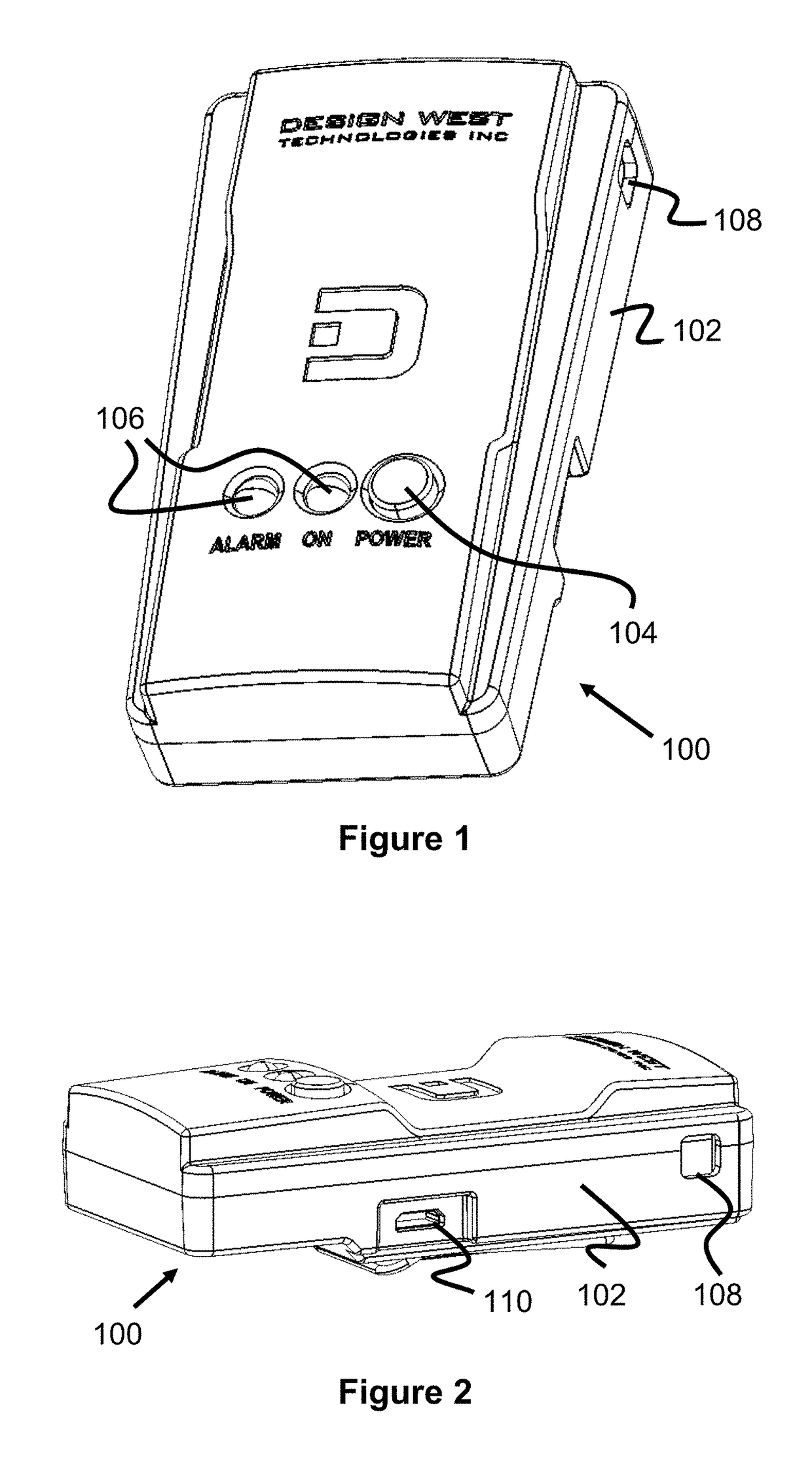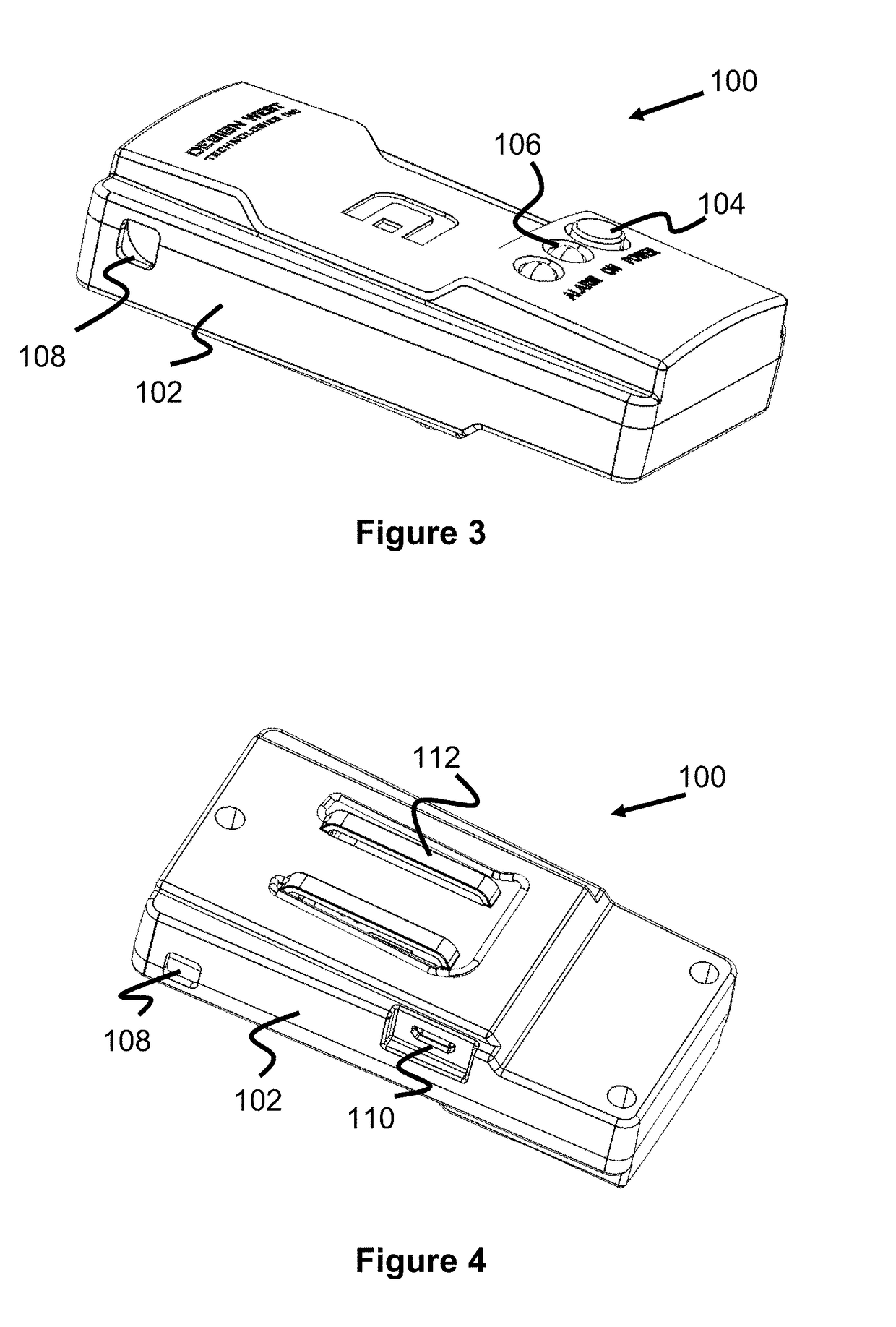Wearable Sensor Badge For Toxic Industrial Chemicals
a technology for industrial chemicals and sensors, applied in the field of chemical and/or biological detection, can solve the problems of impracticality of mounting these sensors, and achieve the effect of reducing cross sensitivity and highly sensitive respons
- Summary
- Abstract
- Description
- Claims
- Application Information
AI Technical Summary
Benefits of technology
Problems solved by technology
Method used
Image
Examples
Embodiment Construction
[0020]Specific embodiments of the invention will now be described with reference to the accompanying drawings. This invention may, however, be embodied in many different forms and should not be construed as limited to the embodiments set forth herein; rather, these embodiments are provided so that this disclosure will be thorough and complete, and will fully convey the scope of the invention to those skilled in the art. The terminology used in the detailed description of the embodiments illustrated in the accompanying drawings is not intended to be limiting of the invention. In the drawings, like numbers refer to like elements.
[0021]FIGS. 1-7 illustrate various views of a first embodiment of a wearable sensor unit 100 for detecting toxic industrial chemicals (TICs) and chemical warfare agents (CWAs) in the form of gas, vapor and aerosol, as well as monitoring permissible exposure limits (PEL) and immediately dangerous to life or health (IDLH) chemical levels. In one example, the sen...
PUM
| Property | Measurement | Unit |
|---|---|---|
| weight | aaaaa | aaaaa |
| size | aaaaa | aaaaa |
| size | aaaaa | aaaaa |
Abstract
Description
Claims
Application Information
 Login to View More
Login to View More - R&D
- Intellectual Property
- Life Sciences
- Materials
- Tech Scout
- Unparalleled Data Quality
- Higher Quality Content
- 60% Fewer Hallucinations
Browse by: Latest US Patents, China's latest patents, Technical Efficacy Thesaurus, Application Domain, Technology Topic, Popular Technical Reports.
© 2025 PatSnap. All rights reserved.Legal|Privacy policy|Modern Slavery Act Transparency Statement|Sitemap|About US| Contact US: help@patsnap.com



